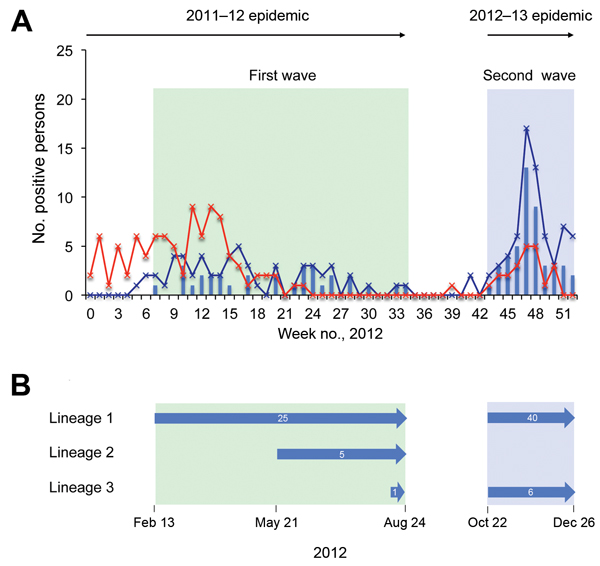Volume 20, Number 6—June 2014
Research
Rapid Spread and Diversification of Respiratory Syncytial Virus Genotype ON1, Kenya
Figure 1

Figure 1. A) Number of persons positive for respiratory syncytial virus (RSV) genotype ON1 during 2 infection waves, Kilifi, Kenya, 2012Blue line indicates cases of RSV group A infection; red line indicates cases of RSV group B infection; bars indicate number of ON1 case-patients admitted to Kilifi District Hospital during January 1–December 31, 2012The first ON1 infection wave (green shading) overlapped with a 2011–12 RSV epidemic, and the second ON1 infection wave (blue shading) overlapped with a 2012–13 RSV epidemic (see arrows above graph)B) Lifespans of the main ON1 lineages observed at KilifiNumbers inside arrows indicate the number of sequences for the lineage named at the far left.
Page created: May 16, 2014
Page updated: May 16, 2014
Page reviewed: May 16, 2014
The conclusions, findings, and opinions expressed by authors contributing to this journal do not necessarily reflect the official position of the U.S. Department of Health and Human Services, the Public Health Service, the Centers for Disease Control and Prevention, or the authors' affiliated institutions. Use of trade names is for identification only and does not imply endorsement by any of the groups named above.